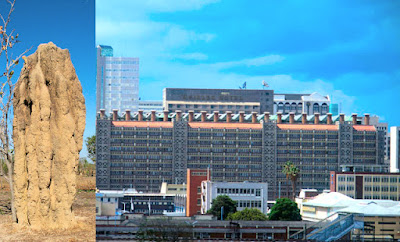Eco-Architecture - Second International Conference in Portugal
 The 2nd International Conference on Harmonisation between Architecture and Nature (Eco-Architecture) took place recently in the Algarve, Portugal, organised by the Wessex Institute of Technology of the UK.
The 2nd International Conference on Harmonisation between Architecture and Nature (Eco-Architecture) took place recently in the Algarve, Portugal, organised by the Wessex Institute of Technology of the UK.Eco-Architecture provides design in harmony with nature, including its immediate environments. Decisions are taken on ecological grounds covering location, siting and orientation, as well as the well-informed choice of materials.
The conference papers were organised in a series of sessions as follows:
* Design with nature
* Design by passive systems
* Rehabilitation and adaptive re-use
* Ecological and cultural sensitivity
* Case studies
* Resource conservation and building technologies
Eco-Architecture makes every effort to minimise the use of energy at each stage of the building’s life cycle, including that embodied in the extraction and transportation of materials, their fabrication, their assembly into the building and ultimately the ease and value of their recycling when the building’s life is over. The design ought also to take into account the use of energy in building maintenance and changes in its use, not to mention its lighting, heating and cooling, particularly when the energy concerned involves the emission of greenhouse gases.
The development of eco-architecture is driven by the depletion of natural resources, especially fossil fuels and the need to preserve the balance of nature. The extensive use of steel and glass and the built-in problems of discomfort from solar over-heating and winter heat loss, has led to the widespread use of mechanical systems, which by careful design, could have been avoided in almost any climate.
this Conference on Harmonisation Between Architecture and Nature ought to be in harmony with nature, including its immediate environs. Eco-Architecture is providing imaginative and expressive solutions driven by a generation of highly creative designs. It has important cultural as well as architectural impacts. Picture (Arkin Tilt Architects)
Book from the conference


Comments